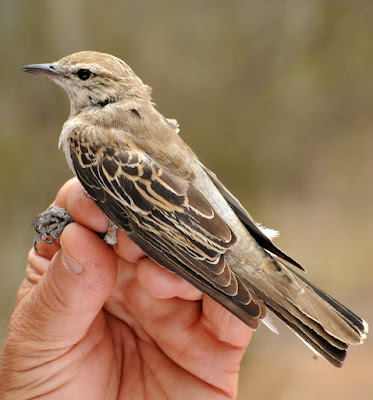Tawny Frogmouths feeding two-week old chicks
The tawny Frogmouths which were featured in the previous film, now have three chicks over two weeks old. And they take a lot of feeding.
Here the female, the smaller and less boldly -marked bird, offers a small prey item to the chicks.
The oldest frogmouth chick is now eighteen days old, the other two one and two days less as they do not all hatch in one day. In the attached film, they can be seen to be very hungry at the beginning of the night when the female first brings in some food. They call very quietly in a hoarse whisper, and they compete for the food she brings by stretching up to her bill. In the early part of the night, when still lively, the chicks spend much of the time wriggling and shuffling, wing flapping and stretching. And during the first part of the night the adults were mostly away from the nest, although perhaps close by, but they never brooded the chicks during the main feeding period.
All the food items were the same, unidentified, but long, thin and with tiny legs - centipedes?
The adult birds were totally silent all night. The background sounds are magpies and currawongs calling at dusk, then several species of frog calling during the night.
When the male first left the nest after his day-long stint, he brought in a sprig of vegetation to add to the nest, the chicks dismissed that as no use for food.
There were 129 food items brought in over the whole night, about 43 for each chick. Most were brought in during the first three hours at a rate of one every two minutes on average, but at times the birds brought in prey three times in a minute. Eventually, about one-o-clock, the chicks began to look sleepy and feebly lifted their heads for food. Then the female shuffled over and brooded them. From then on, the birds only brought six or seven items per hour, and they brooded the chicks for longer sessions as dawn approached.
(approx. 4 minutes and 10Mb)
The female settles to brood the chicks after a long three hours
of almost continual supply of food to the chicks.



















































